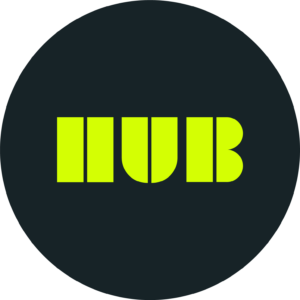Third-party cookies will soon be no more, but is this really the end of days for digital marketing? MiQ’s Product Director – Media and Data, Tom Richards, explores the new cookie-less world.
MiQ is the Lead Media Sponsor at this year’s Digital City Festival – supporting the unmissable Digital City Expo coming to Manchester Central on Wednesday and Thursday. Attend the Media Zone at the expo to meet leading exhibitors from some of the country’s most exciting companies, and hear from a range of important speakers.
The advertising world has harnessed data, mainly via the use of cookies, to learn more about audiences and target them for the past decade. But data breaches such as the Facebook-Cambridge Analytica scandal have raised consumer concerns about what data is collected about them, by who, and how it is handled.
This has led to an array of programmatic industry-wide changes that prioritise consumer privacy. GDPR led the way, and Facebook and Google have also made voluntary changes, the latest being the removal of third-party cookies from internet browsers. Safari blocked them in 2017, Firefox followed suit late last year, and Google Chrome, which accounts for around 60% of browsing, has announced a two-year transition period to do the same.
So advertising is going cookieless and we should have all seen it coming. But is it the end of digital advertising as we know it?
The answer is yes, and no. Yes, third party cookies are dying an inevitable death, and until now they have formed a core part of measurement, attribution and smart media buying for advertisers. Big changes lie ahead and everybody from publishers, to advertisers, agencies and tech platforms are going to have to lean in whether they want to or not.
Tailored advertising is going nowhere
But there is no need to panic. The most important thing to remember is that tailored digital advertising isn’t going to go away. The mechanisms used to deliver it will just have to change to incorporate better privacy and choice for consumers.
There are several changes taking place across the industry across both the open RTB environment, and “closed” environments too – focusing on diversifying to alternative data points and technologies that are becoming available.
Closed environments like Google are building “clean rooms” – privacy-first collaborative analytics platforms that allow for data science solutions to be conducted on their data at an aggregated level, keeping information about individuals secure without hindering innovation. The most advanced clean room right now is Google’s Ads Data Hub (ADH).
Meanwhile, publishers have been focusing on educating their consumers about what it means to access free content, with initiatives like paywalls and memberships that help them collect alternative data points.
And anyone following the trade press will know that the OpenRTB ecosystem, made up of most non-walled garden programmatic tech, has been steadily consolidating and at the same time adapting to the changing privacy requirements by diversifying their offering.
So how can advertisers and their agencies actually start to prepare in the medium and long term?
Five steps to prepare
The first step is to talk to your partners about how they are future-proofing. Anybody who owns their own cookie space should already be adapting to the change in Chrome by labelling cookies, but there are a few ways you can plan ahead for the ultimate removal of third party cookies altogether.
- Start planning to shift investments to cookieless channels. Contextual targeting is the obvious low-hanging fruit. But digital OOH, mobile, connected TV, and audio are all growing steadily to become the biggest channels for programmatic investment – and they also all happen to be cookieless. We’ve seen advanced contextual buying grow compared to audience buying in the last 12 months, and mobile has also grown considerably compared to desktop.
- Focus on eye-catching creative and messaging that users want to engage with. If your message is compelling enough you’ll have increased cut-through, with less need for niche targeting. That’s why we’ve seen creative formats such as chatbots take off in many of our global markets. Using an engaging, interactive chatbot allows consumers to self-identify as being interested in a product.
- Build out your first-party data. You have a legitimate relationship with consumers surfing your site and, if you continue to build on this data, you can unlock effective audience targeting by building out a cross-device identity graph tied to logged in users, not just cookies. If you haven’t thought about the data you have access to and how you can harness it, now is the time to do so.
- Stay informed on shared ID opportunities. Supply-side partners are already hard at work planning to find other ways to monetize their user-base when the cookie finally crumbles. We’re already seeing them looking to get ahead by capturing data such as email addresses in return for access to online content. The RTB auction process is set to undergo a facelift to ensure these data signals can be passed along for activation, so shared ID solutions and partners are likely to play a big part in the future of targeting.
- Understand the clean room opportunity. ADH and other clean rooms present a unique opportunity to access log level user data in a privacy first environment. We’re working to replicate many of our capabilities such as predictive modelling, custom audience activation and incrementality measurement within ADH, to help our clients differentiate and get the most out of their investments in the Google Marketing Platform.
Our advice? Stay cool but lean in. Don’t just sit tight and hope that publishers will figure something out – this is everyone’s responsibility.
Our industry has already faced a number of storms and come out stronger. Take the ad-blocking trend for example; four years ago, you might have thought this was the apocalypse for programmatic but, through innovation, we came out of the other side intact.
As long as we come together to collectively work towards a future that puts consumer privacy first, we can still innovate. At MiQ at least, we are still very excited about the decade of programmatic everything that lies before us.











